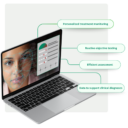Whether your patient is in the clinic or taking the test at home, this guide shows you exactly…
Guides
What does management of ADHD look like in older adults?
Late-diagnosed ADHD is becoming increasingly common, with more adults receiving a diagnosis in their 50s or 60s. ADHD…

What does the gold standard of ADHD diagnosis and treatment look like in 2025 and beyond?
In 2025, the gold standard of ADHD diagnosis and treatment is evolving, shaped by updated DSM-5 criteria, new…

Understanding ADHD in 2025: Prevalence, diagnosis, guidance, and treatment
Our understanding of ADHD, the symptoms, treatment options, and assessment methodologies, is evolving rapidly. In a short time,…

Objective testing: A cost-saving approach to smarter ADHD care for clinics worldwide
ADHD is a global issue and healthcare providers face common challenges; providing equitable patient experiences across boundaries, reducing…

ADHD and comorbidities: What virtual providers need to know when diagnosing and managing ADHD
ADHD rarely exists in isolation. The prevalence of coexisting conditions such as anxiety, depression, substance use disorders…

Marketing ADHD services to patients: A guide to branding and communications strategy
Marketing is an integral tool for growing any business. For ADHD clinicians and providers, it helps scale…

How QbCheck can help scale ADHD virtual care providers
Virtual ADHD care providers are uniquely positioned to meet the growing demand for ADHD diagnosis and treatment…

Enhancing the use of data-driven ADHD care in your service
Clinics worldwide are facing growing demand for ADHD services, exposing operational bottlenecks in many clinics including long wait…

The guide to objective ADHD testing for clinicians
Behavioral assessments, rating scales, and patient interviews often dominate assessment pathways yet carry the risk of subjectivity. More…

About
Our guides are designed to support clinicians like you navigate the complexities of ADHD treatment and diagnosis.
You can better understand how our ADHD tests work and how you can use them to effectively support your patients.
